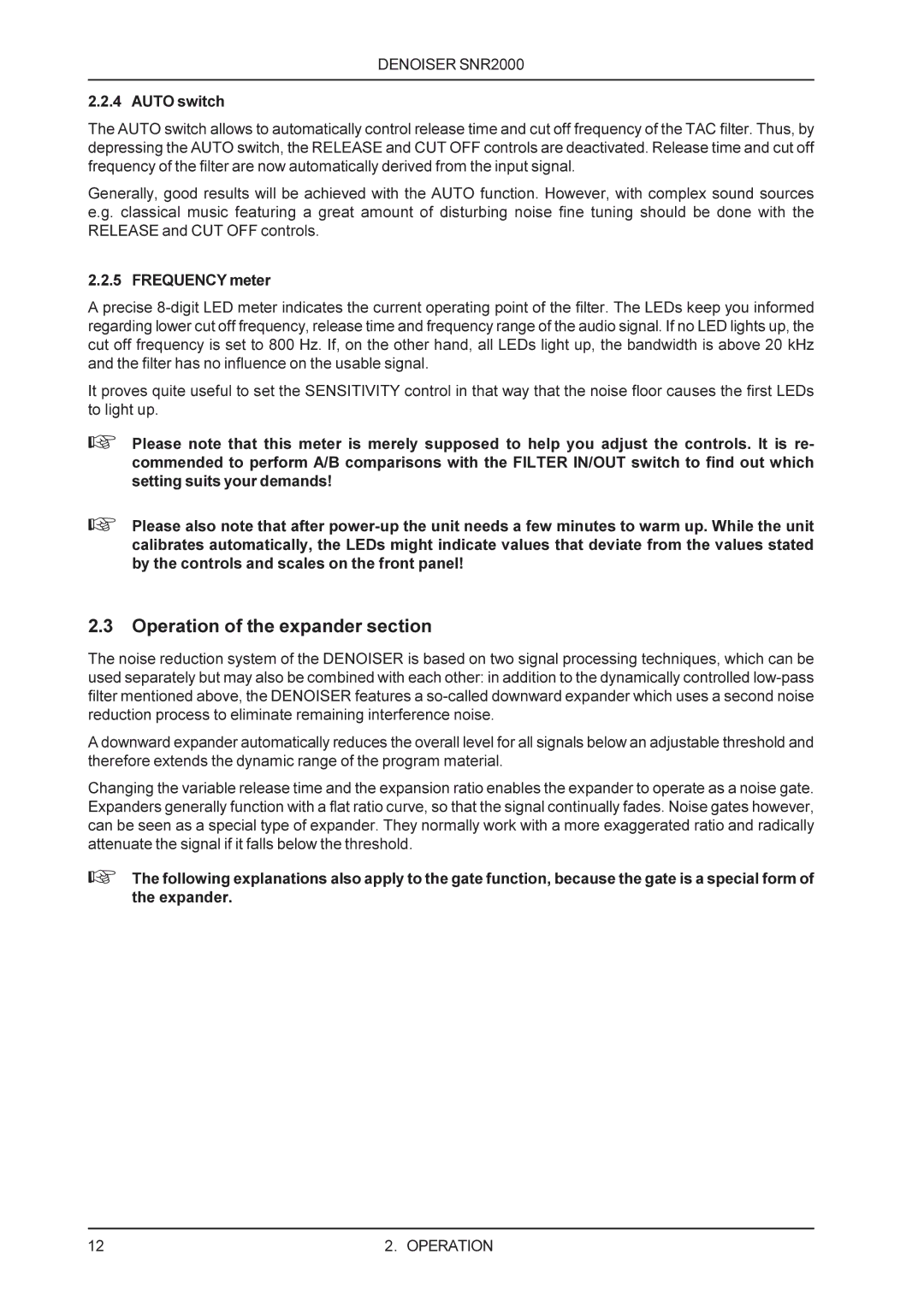
DENOISER SNR2000
2.2.4 AUTO switch
The AUTO switch allows to automatically control release time and cut off frequency of the TAC filter. Thus, by depressing the AUTO switch, the RELEASE and CUT OFF controls are deactivated. Release time and cut off frequency of the filter are now automatically derived from the input signal.
Generally, good results will be achieved with the AUTO function. However, with complex sound sources e.g. classical music featuring a great amount of disturbing noise fine tuning should be done with the RELEASE and CUT OFF controls.
2.2.5 FREQUENCY meter
A precise
It proves quite useful to set the SENSITIVITY control in that way that the noise floor causes the first LEDs to light up.
+Please note that this meter is merely supposed to help you adjust the controls. It is re- commended to perform A/B comparisons with the FILTER IN/OUT switch to find out which setting suits your demands!
+Please also note that after
2.3 Operation of the expander section
The noise reduction system of the DENOISER is based on two signal processing techniques, which can be used separately but may also be combined with each other: in addition to the dynamically controlled
A downward expander automatically reduces the overall level for all signals below an adjustable threshold and therefore extends the dynamic range of the program material.
Changing the variable release time and the expansion ratio enables the expander to operate as a noise gate. Expanders generally function with a flat ratio curve, so that the signal continually fades. Noise gates however, can be seen as a special type of expander. They normally work with a more exaggerated ratio and radically attenuate the signal if it falls below the threshold.
+The following explanations also apply to the gate function, because the gate is a special form of the expander.
12 | 2. OPERATION |
